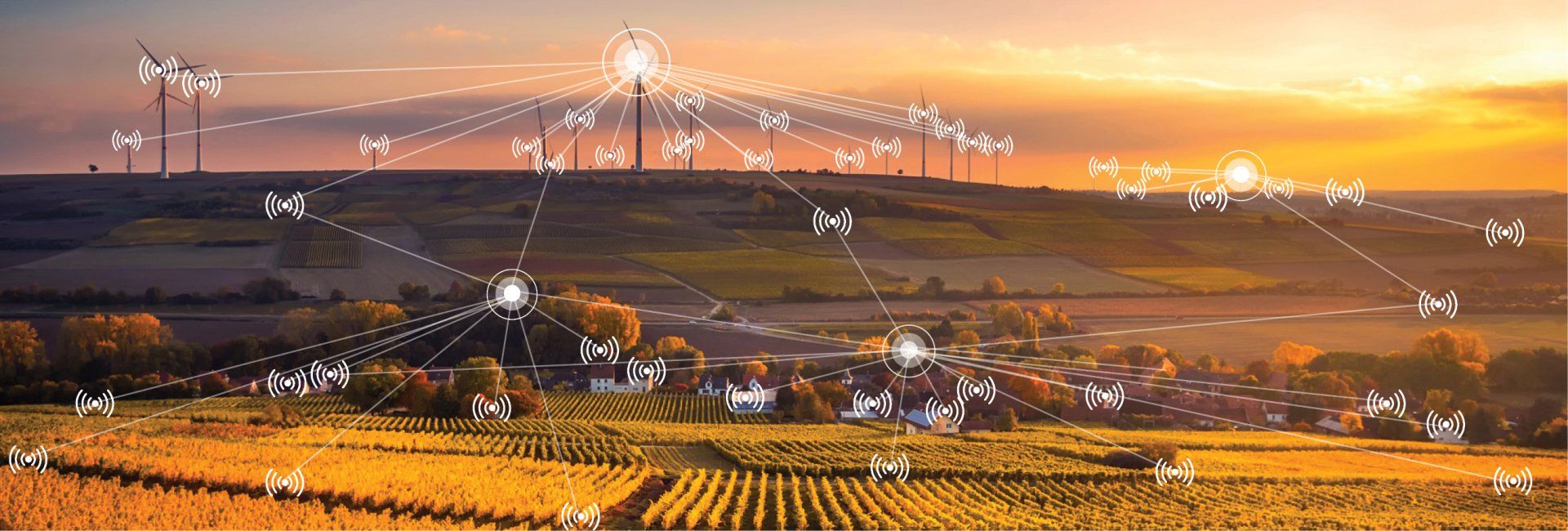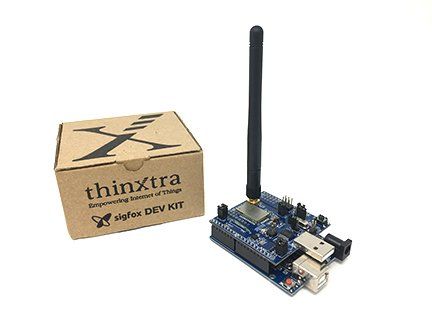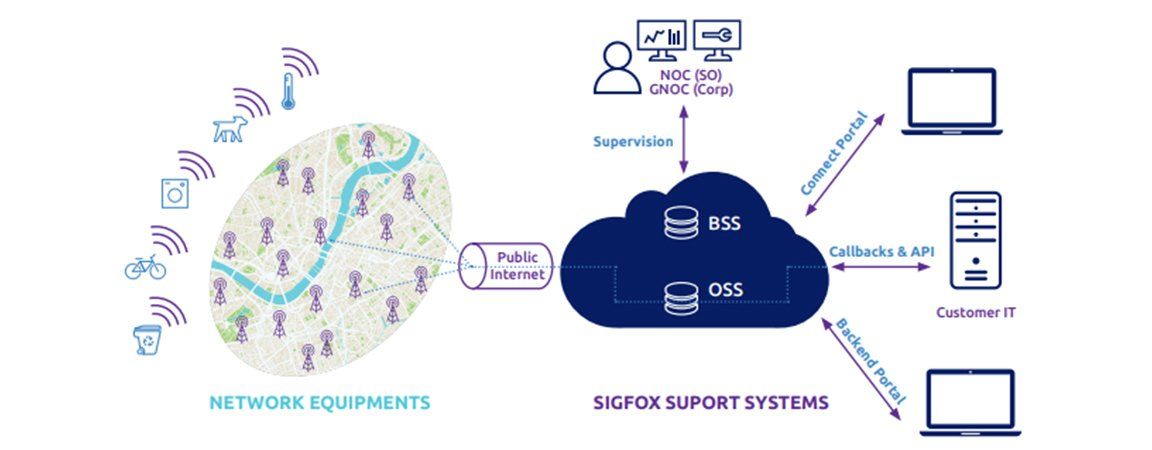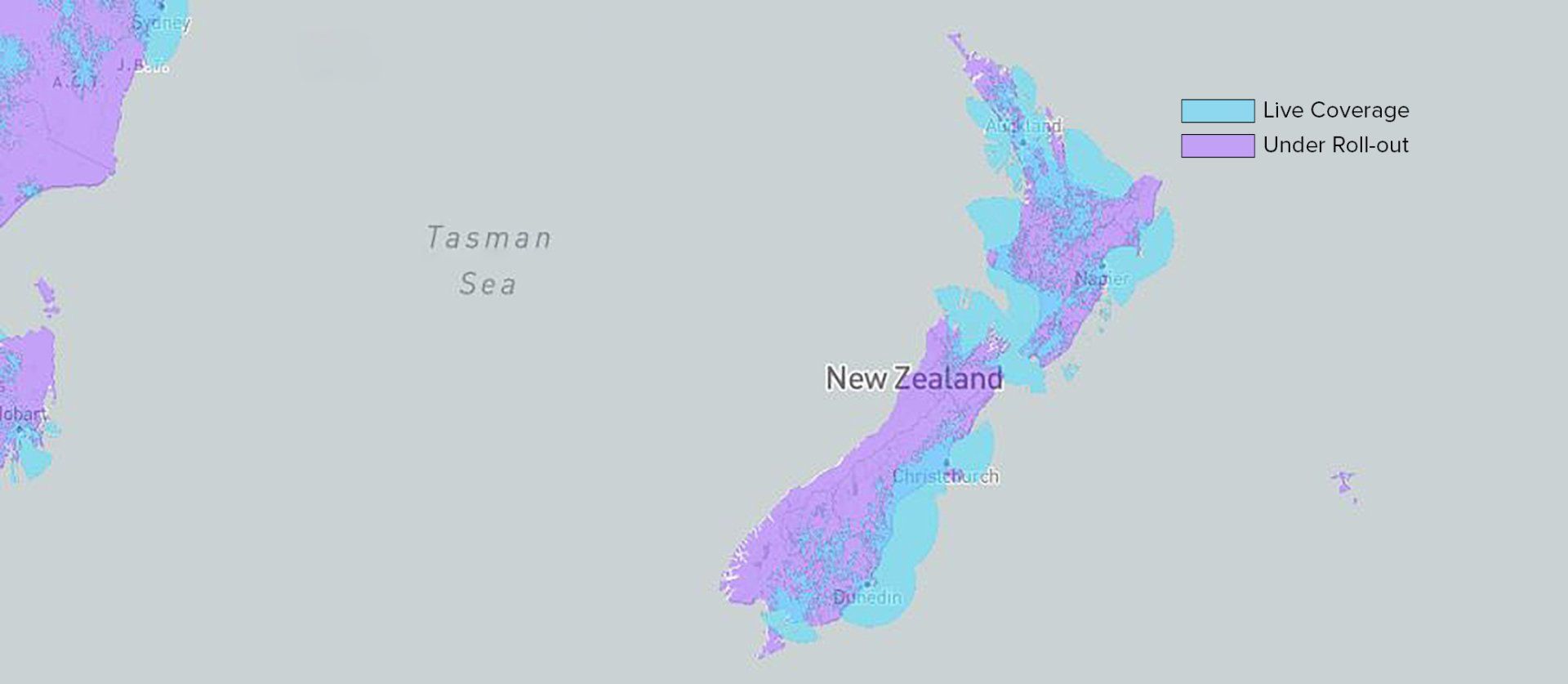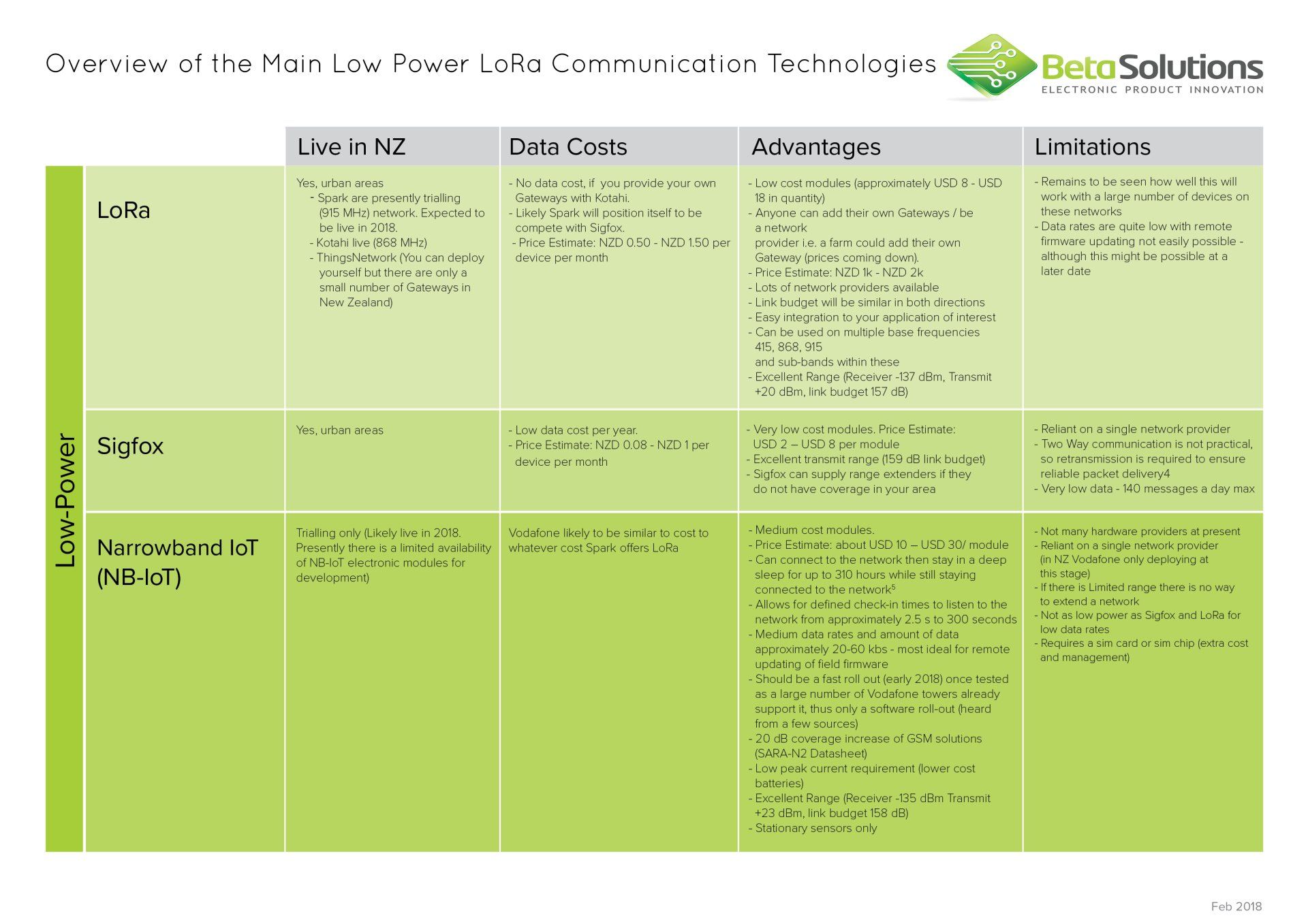Beta Solutions Blog
Sigfox Technology Review
Date: March 28, 2018
In this blog we take a closer look at the Sigfox technology that was first introduced in our December Blog: "LPWAN Benefits for IoT Connectivity". To recap, LPWAN - which stands for Low Power Wide Area Network - is a communication protocol which is designed to transmit small amounts of data over large distances.
Compared with traditional cellular-network connected devices, LPWAN devices consume significantly less electrical power, enabling these devices to last 5-10 years on a single battery. Large Telcos (such as Spark and Vodafone) are now recognising the low-power benefits of this technology and are in the process of trialing certain LPWAN infrastructure. It is expected that Telco-supported LPWAN technologies such as LoRa and NB-IoT will be officially rolled out in New Zealand sometime between 2018-2019.
Sigfox's network however achieved 50% coverage of New Zealand in Aug 2016! The rest of this article will detail what Sigfox has to offer to the LPWAN market and will provide a brief technical overview of how the underlying technology works.
General Overview
Founded in 2009, Sigfox is a French company that has designed and developed a Low Power Wide Area Network (LPWAN) technology by the same name. So to be clear, we have Sigfox "the company" and Sigfox "the technology".
Sigfox has been a pioneer in developing a network specifically designed for Internet-of-Things (IOT) applications. They foresaw the ever-growing demand for internet connected devices and no network suitable to do it - so they built their own end-to-end proprietary solution. Their vision was and is to "connect the unconnected" and they continue to work towards their goal of connecting billions of devices through their network.
Sigfox technology is suitable for applications where devices:
- Need to be low cost
- Send small amounts of data infrequently
- Use one-way communication (device to base station direction only)
- Transmits non-critical information only.
A good example would be a remote temperature sensor. Such a device could be manufactured in large quantities at low cost. Further, it would only ever transmit a small amount of data and infrequent measurements (say hourly) would be appropriate. Also, one-way communication would be suitable as data would only ever be sent from the temperature devices to the receiving base station.
On the other hand, if your application requires high amounts of data* or two-way communication** or message sent to the device - Sigfox is likely not the LPWAN technology for your device.
* Sigfox only permits 12 byte payloads which is enough for some applications but far too little for others.
** Technically, Sigfox does have the capabilities for two-way communication however it is very limited.
Technical Overview
The following provides more technical information about the Sigfox technology in the form of some "Frequently Asked Questions".
#1 Broadly speaking, what does the Sigfox Network Architecture look like?
Sigfox describe their network as having a horizontal and thin architecture comprised of two main layers as follows:
1. Equipment layer
- You can think of the equipment layer as the hardware used to create the network. The majority of this layer consists of the base stations - which are responsible for listening and receiving messages from devices and forwarding them to the 2nd layer, support systems. The Sigfox base stations in New Zealand are built by Kordia and operated by Thinxtra (who is also the network operators in Hong Kong and Australia).
Figure 1: Sigfox Development Kit from Thixtra
2. Support system layer
- The support system layer is the back-end software side of the network - where the devices' data gets processed. The device's data may then be displayed through a web page that can be accessed anywhere with internet. More technically speaking, you have the choice to setup what is called a "callback" which will forward your devices' messages to a place of your choosing. Once your data has been forwarded to the correct place on the internet (e.g.: a supported cloud platform), you can customise the way your data is displayed and who has access to it.
Figure 2: Sigfox Network Architecture
Security FAQs:
#2 How secure is my data?
The architecture of the network and the nature in which the devices communicates is inherently more secure than a typical cellular network. A Sigfox device is actually never "connected" to the network. It only ever sends and receives data when it was programmed to. The device will never be able to send data to other entities through the internet because it is never connected to it. Sigfox call this their "built-in firewall"
#3 What about someone intercepting the message intending for a base station
By default the message is encrypted but the payload information can be seen by the network provider. If you want to keep your data private, you can add your own encryption at the device end and then decrypt the information once it has reached its destination.
#4 What if someone imitates my device and sends incorrect/malicious data
During manufacturing, devices are given an authentication key. Any message from a device will have a cryptographic token in the header information which is generated from its authentication key. This token is checked in the support system layer to validate the device's identity.
Network coverage FAQs:
#5 What network coverage can I expect?
As of February 2018, Thinxtra have achieved Sigfox coverage of 85% of New Zealand's population (mostly city centers). This is one of Sigfox's biggest advantages as Spark and Vodafone don't have an offcial LPWAN network yet.
#6 What if my devices don't have general network coverage?
Unlike LoRa you can't just purchase your own gateway and set it up as a base station. Fortunately however, Thinxtra provide an option for users to rent a "mini base station" that essentially extends the network coverage to include your devices. It sounds a lot like having your own gateway but Thinxtra will install and maintain it for you. If you have lots of devices they will consider installing a full base station to include your devices free of charge.
Figure 3: Sigfox Coverage of New Zealand
#7 How does Sigfox achieve long range and low power?
Short answer: "It's technical". If you are interested ... read on ...
Longer answer:
- They use a carrier frequency of <1GHz - which helps communications to penitrate further through the atmosphere. i.e increasing the range.
- They use Ultra-narrow band modulation (UNB).
Even longer answer:
Sigfox transmits from device to base station using ultra-narrow band (UNB) modulation across a 192KHz band. The base station listens on this 192KHz wide band for any UNB messages. These UNB messages are 100Hz wide which helps with the overall capacity of the network as well as makes it easier for the base station to distinguish between the message and the noise floor. UNB is known for being spectrum efficient which makes sense in this case because each message only uses a tiny bit of the 192KHz bandwidth.
To improve the chances of the base station receiving the messages, Sigfox employs random access. Traditional cellular networks rely on the device being connected to one tower continuously and when the device move out of range it will connect to the next tower. With Sigfox devices this is not possible as the power requirements are too high. Instead the device and base station communicate unsynchronized. Random access helps to overcome the unreliability that comes with communicating unsynchronized. Every time a device sends a message it will actually transmit three copies of that message on differing frequency inside the 192KHz bandwidth.
Unlike traditional cellular, which communicates in licensed spectrum, Sigfox operates at 928MHz which is unlicensed in New Zealand. LoRaWAN technology uses 928MHz for their downlink messages which may cause interference when the density of devices increases. The downside of using the unlicensed spectrum is of course any one can transmit on it, so technical rules are put in place to mitigate possibilities of interference. These rules limit the "on-air" time to 1%. Although these rules are different depending on the country, Sigfox has decided to have their rules uniform no matter the country.
Rules for Sigfox:
- A maximum of 140 uplink messages per day
- 12 byte payload per downlink message
- A maximum of 4 downlink messages per day
- 8 byte payloads per downlink message
- Transmits at 600bps 24dBm (in NZ)
An "uplink message" is a message sent by a device to a base station which is later displayed in the cloud back-end. The majority of messages will be uplink messages, carrying the usefull data your device is collecting. The payload is a modest 12 bytes which take six seconds to send. So you can see the effective data rate of payload infomation is 2 bytes per second. Compare that to 4G cellular which has a data rate in the range of 5Mbps and which is over 2 million times faster. But of course sending small amounts of data has the upside of only using a little bit of energy, allowing devices to last up to and past 10 years, where as my phone is lucky to make it through the day.
"Downlink messages" are configured in the back-end and sent from the base station to the device. A maximum of four downlink messages per day gives us a hint that Sigfox was not designed for downlink communication. It's simpliy there for configuration purposes but never the less it is still there. So if you have a deivce that needs two way communication Sigfox is probably not the technology for you. Downlink messages are requested by the device, so you can't just send one anytime you want either, the device will have to be programmed to request a downlink message at certain times. The range at which these downlink messages can be recieved will suffer from the low grade recievers on the device. unlike the cellular grade recievers at the base stations.
#8 What are the key differences between Sigfox and other LPWAN technologies?
The two main competitors to Sigfox are NB-IoT and LoRa. As previously mentioned, Vodafone and Spark intend to release their networks sometime during 2018. Vodafone plan to release just the NB-IoT network whilst Spark have proposed to release both.
- LoRa offers a lot more network freedom to the user:
- With LoRa anyone can set up their own gateway and operate your network free of charge. (Alternatively, you could use the likes of paid networks like Spark or KotahiNet).
- With Sigfox there is strictly only one network available - provided through Thinxtra. (Even when you rent out a mini base station you have no control over it). This highlights the potential risk that if Thinxtra was to go under (however likely or unlikely) Sigfox devices in the Asia Pacific could become obsolete.
- NB-IoT offers more data:
- NB-IoT can acheive transmit speeds of around 20-60 kbps. This allows for "over the air" (OTA) device firmware upgrades.
- Sigfox data speeds 0.6 kbps are just too slow for OTA updating.
- Sigfox offers roaming:
- Sigfox (and LoRa) both have the ability to roam between base stations.
- NB-IoT devices struggle with roaming, and are better suited paried to a single base station.
- Sigfox has the lowest cost devices - a significant benefit especially if users are considering large scale deployment.
Sigfox may be closed on the network side, however it is very open on the device side. The protocol stack is the firmware in modules that generates the radio frames in the correct way to be able to communicate to Sigfox's base stations. To get the cost of devices down, Sigfox give away their protocol stack royalty free to modem manufactures. This is why Sigfox have the most affordable modules out there at a quarter of the price of other technologies' modules.
See the table below for a more detailed comparison Overview of Low Power LoRa Communication...
Conclusion
There is no one size fits all LPWAN technology, each one has their pros and cons and Sigfox is no exception. Sigfox out shines the other technologies with its royalty free protocol stack allowing for super inexpensive devices. It has already covered >85% of the New Zealand population. The down sides of Sigfox are its very small payload sizes, limited messages per day and its two-way communication limitations.
Beta Solutions has experience in developing products containing various communications technologies, including: LoRaWAN, Sigfox, Cellular, Bluetooth, Wifi, and Satellite communication.
If you are after more information, subscribe to our Blog for updates as we will continue to look at emerging IoT connectivity technologies. Alternatively you can get in touch via our contact page or give us a call.
Refrences:
- Figure 2: Sigfox Network Architecture. Retrieved from https://www.disk91.com/wp-content/uploads/2017/05/4967675830228422064.pdf
- Figure 3: Sigfox Coverage of New Zealand. Retrieved from https://www.sigfox.com/en/coverage
- Photographs from Pexels https://www.pexels.com



